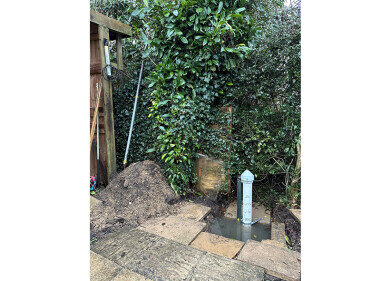Water/Wastewater
Is the United Arab Emirates Facing a Desalination Crisis?
Jan 20 2023
In the United Arab Emirates, desalination is an utter necessity. As a coastal nation lacking in freshwater reserves, there’s been no other way of supplying the burgeoning economy with the water-resources that it needs without it. But in recent years, urgent questions have been raised over its sustainability.
Just a quick refresher for the out-of-practice: the residual water that cannot pass through the semi-permeable membrane used to desalinate seawater is designated brine, and it’s hyper-concentrated with all of the stuff that the process is trying to remove to the point where it becomes highly toxic to marine life, as well as contributing to hyper-salinity, temperature change, and oxygen depletion.
But how much brine is being produced? A UN-funded report from 2019 calculated that the world’s 16,000 desalination plants produce around 95 million tonnes of drinkable water each day. But for every litre of water they produce, they also churn out almost 1.5 litres of brine – 50 per cent more than previously thought.
Desalination plants in the UAE are estimated to produce around one-fifth of the world’s brine – and it's all being discharged right into the Gulf. This is particularly worrying because of the Gulf’s shallowness; at its deepest, the ocean is only 100m from surface to sea-floor! As such, salinity rises far quicker, so much so that certain stretches of the ocean are already over 50% saltier than typical sea water, which is likely to have an effect not only on marine life but on the cost-effectiveness of desalination.
Or does it? Some researchers from the UAE argue that the adaptability of marine life to increases in salinity have hitherto been underplayed. Far from evacuations or micro-extinctions, regions of saltier water around discharge outlets have actually seen a near-flourishing of life-forms. For instance, research conducted by Khalifa University reported that discharge outlets from desalination plants in the Emirates boast the only organisms for hundreds of metres, and that the types of coral believed to be most at-risk from brine and other by-products of the desalinating process are, in actuality, much more salinity-adaptable than previously reported. Further, there have been rumblings at universities in Israel that bacteria and microscopic fauna can also flourish near desalination plants – which, of course, is a double-edged sword, given that such increases can destabilise the regional food-chain.
As mentioned previously, though, there is much to consider beyond salinity. For instance, desalination in the Emirates discharges harmful anti-fouling agents, too, and the initial processing of seawater is, unsurprisingly, responsible for the de-population of regional fish and crustacean species. Regarding the temperature change caused by brine discharge, Khalifa University suggest that even minute increases in average temperatures, say 0.5-1.0 degrees Celsius, can put certain coral species on watch.
So, what can the Emirates do about all of this? Well, it’s unclear. The authorities have experimented with using small inland ponds as methods of storage, but without extreme caution, the brine seeps into deep-underground groundwater sources, fouling precious reserves. So, a high-risk solution which, lacking the natural reserves, does not have much longevity for the Emirates
But given what we’ve discussed about the potential salinity-resilience of certain forms of marine life, researchers have been experimenting with the prospects of using brine as a means of producing highly salinity-resilient algae and fish, to be released into effected oceans as a supplement to biodiversity and a means of strengthening impacted ecosystems. One with significant prospects is spirulina, which is able to defang many of the most toxic chemicals in desalination waste. A fresh-water fish in the wild, tilapia’s the big prospect on the fish-front, as their skin acts similarly to the membranes used in desalination – and it’s one of the most sought-after fish in the world. Cultivating the most robust tilapia for hypersaline environments may, therefore, provide the United Arab Emirates with an advantage in this profitable market, supplying extra-funds for desalination infrastructure that, to be frank, is only going to get more expensive.
It’s a tough spot for the growing Middle Eastern power. There are no easy solutions. But innovative thinking in this sector is likely to bring plenty of attention to the UAE as other countries struggle to deal with their own desalination-related difficulties. If they don’t realise it yet, policymakers will soon understand that becoming pioneers in this area now might just put the UAE above the salt in the future.
Digital Edition
IET 34.2 March 2024
April 2024
Gas Detection - Biogas batch fermentation system for laboratory use with automatic gas analysis in real time Water/Wastewater - Upcycling sensors for sustainable nature management - Prist...
View all digital editions
Events
Apr 30 2024 Melbourne, Australia
Apr 30 2024 Birmingham, UK
May 03 2024 Seoul, South Korea
May 05 2024 Seville, Spain
May 06 2024 Minneapolis, MN, USA


















